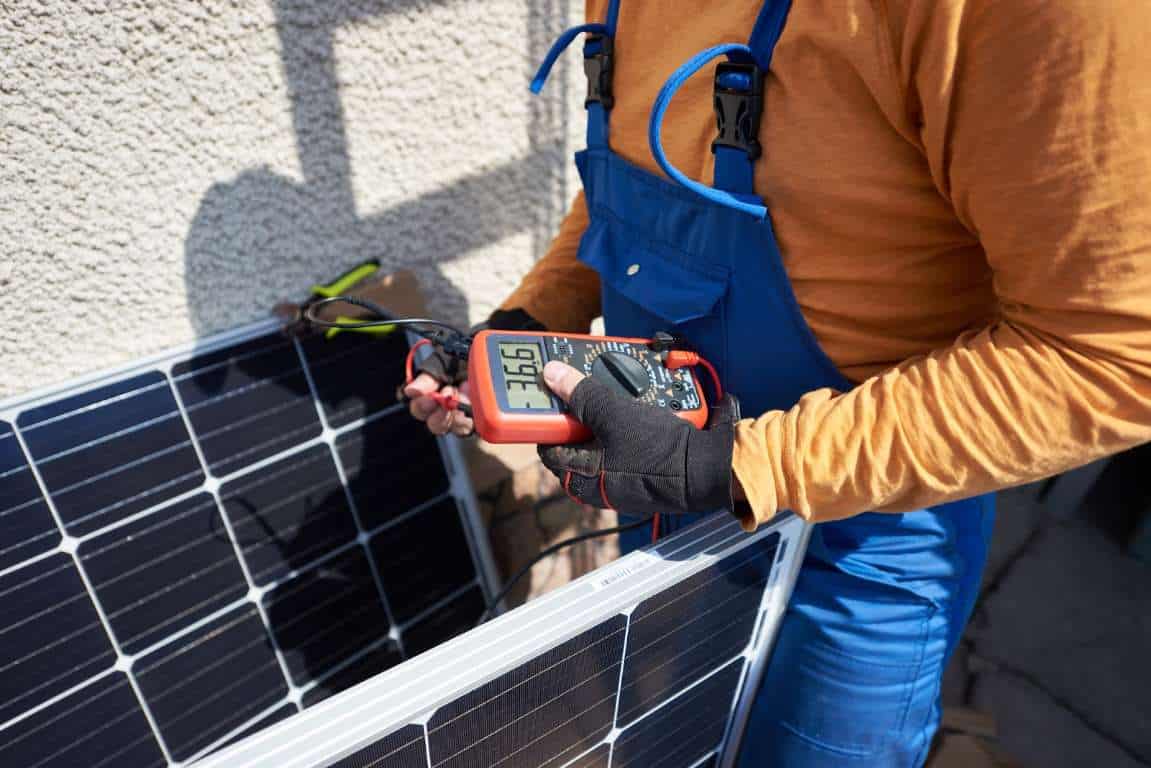Decisions, decisions. You’re reading this because you’ve done some extensive research into solar power, but there are a few more answers you need before proceeding with your venture. Before we can answer the question about 3-phase solar inverters, it makes sense to review the two main power delivery types upon which your power supply is based.
From there, we can consider the type of solar power inverter to employ and whether you need a battery inverter charger. It all depends on your use case.
|
Solar Power System Schedule a free, on-site evaluation. We’ll tell you how many panels you can install, if you should get battery backup, and what type of inverter is right for you. |
Before You Get a 3-Phase Solar Inverter: Check if You Have a Single-Phase vs. Three-Phase Power Supply
Deciding between a single-phase or three-phase power supply is one of the easiest and most basic determinations to make when installing a building’s electrical system. The main factor is the total electrical load the system is expected to draw.
Average residential homes and small businesses (think stores, three or four-room offices) need only a two-wire (one conducting, one neutral), single-phase power supply for running heating and air conditioners, plus various appliances and lights.
Many mid-sized businesses, large housing developments, and industrial units are better served with a four-wire (three conducting, one neutral), three-phase power supply. It can better accommodate higher loads, such as driving powerful electric motors and pumps.
Advantage of Three-Phase Power Over Single-Phase
Since a three-phase power supply can extract three times as much current from the electrical grid, it can transmit three times more power to the structure than a single-phase power supply. Another reason three-phase is better for industrial use is the consistency of power delivery. Single-phase is more susceptible to voltage rise and dips, whereas three-phase delivers power at a steady, constant rate.
Accordingly, most industrial buildings are three-phase, whereas small commercial units can make do with a less expensive and simpler single-phase system.
| Want to See if Your Building Has Single or Three-Phase Power Supply?
Have a look at your switchboard, being careful not to touch anything. Count the poles on the levers labeled Main Switch. If there is one lever, you have a single phase. If there are three levers (usually labeled 1, 2, 3), you have a three-phase power supply. |
Deciding Between a Single and 3-Phase Solar Inverter
Single-Phase Solar Inverter
Logically, you might assume that if you have a three-phase power supply, you would need a three-phase solar inverter for your solar panel system. However, even if you have 3-phase solar power, a single-phase inverter may be enough.
Single-phase solar inverters are simpler and cheaper than three-phase solar inverters. This simplicity makes them ideal for connection to a single-phase power supply, but you can also connect them to one phase of a three-phase system.
So, if the solar system installed in your building is three-phase, the inverter will only work on one-third of the system. The solar energy power from the other two phases could be sold back to the grid.
An issue with single-phase inverters when feeding power back into the grid is voltage rise. On a day with good solar power generation and low demand in your building, it’s possible that your solar panel system might send too much voltage into the grid.
If that’s the case, the inverter will likely trip to protect itself, shutting off entirely. A three-phase inverter will help alleviate that problem by spreading the load more evenly.
A single-phase solar inverter would not be appropriate for an off-grid 3-phase solar power system with a battery bank because the power from the other two phases would be wasted.
| Learn More About Solar Power Inverter Systems: |
3-Phase Solar Inverter
A 3-phase solar system is designed to meet greater electrical demand; thus, using a 3-phase solar inverter makes sense when attached to a 3-phase electrical system.
In the case of an on-grid solar system, a 3-phase solar system design can send more power back into the grid. 3-phase inverters also reduce the risk of voltage rise by sending solar power to the grid via three cables instead of just one, thus spreading the load.
In addition to the increased power delivery potential, three-phase solar inverters are better at delivering power evenly to different areas of the structure. More power on tap generally equals more stable energy. Acting as inverter chargers, they can also deliver more consistent power to charge the solar battery bank.
Finally, 3-phase inverters are the most appropriate choice for off-grid 3-phase solar power systems. They allow the full potential of the solar system to be harnessed.
Making the Right Choice in Solar Inverters

As we’ve seen, there are many factors to consider when deciding between inverter types, brands, and capacities. Some examples of popular inverters are the Fronius Symo 3.0 and SMA Sunny Tripower. They are both good representatives of a three-phase battery inverter charger.
Smaller home solar systems are usually well served by a single-phase inverter. Still, larger 5KW solar systems and up are better served by a 3-phase solar inverter to take advantage of all the benefits discussed above.
Single or 3-Phase Solar Inverter for Your Property? We’ll Find the Right One
At Airis, we make installing a solar power system completely seamless. If you want to take a hands-off approach, our team can size the system appropriately for your needs. Alternatively, if you want to be fully involved in the decision-making process, we’ll be happy to educate you on the different aspects of your solar power system.
Book your free on-site consultation today to find out how large your solar power system can be, what type of inverter is best for your needs, and more.

